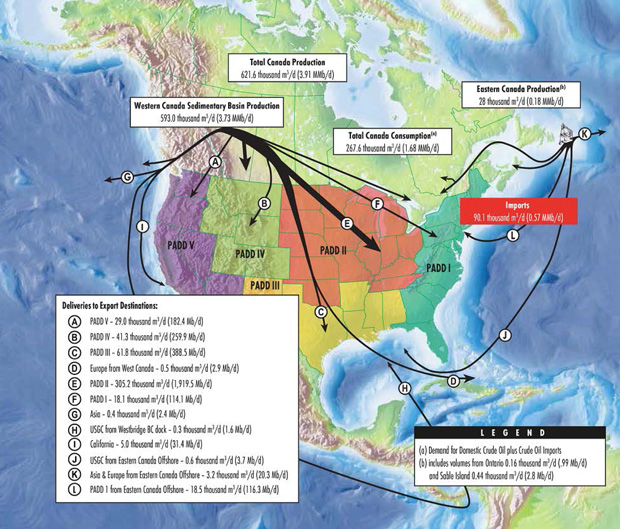Rethinking Lifestyle
Energy: Sources and Uses

Our economy, any economy involves work and work requires energy. The human body is a very efficient machine in terms of work. A fuel efficient car might be able to travel 100 kilometres on 5 litres of fuel, but the human body only needs 0.8 litres of fuel (energy equivalents) to travel the same distance. We extend our ability to do work by using machines run on crude oil, natural gas, electricity and other non-human sources of energy.
The energy used to run the Manitoba economy can roughly be divided into thirds. One third of our energy goes into transportation. Over 90% of transportation energy comes from crude oil. The other 10% comes from ethanol additives. One third of our energy is electricity and over 95% of that comes from renewable hydro power (4% from wind, 1% from solar and solid biomass). And one third of our energy goes to heating buildings and for manufacturing. Most of that comes from natural gas.
I will focus here on the one third that goes to transportation. This is almost completely derived from crude oil.
In terms of energy we can look at Canada in two distinct regions: western Canada and eastern Canada. According to the National Energy Board of Canada we produced 217 million cubic metres (mm3) of crude oil in western Canada in 2015. We consumed only 18% of that in western Canada, 39 mm3. We exported 178 mm3: 17.4 mm3 to the west coast, 50.5 mm3 to the United States and 110 mm3 getting to eastern Canada or to eastern and US exports. The proposed Energy East pipeline could carry 36% of total western exports, that is, 64 mm3 to eastern Canada or to exports off the east coast at St John, New Brunswick.
While western Canada is a net exporter of crude oil, eastern Canada is a net importer. Eastern Canada consumed 64 mm3 in 2015, but produced only 10 mm3, almost all of that off-shore. It imported another 33 mm3 from the US and points east.
It is interesting that the Energy East pipeline proposal has a capacity of 64 mm3 which is exactly the total consumption of eastern Canada.
Manitoba produced 2.7 mm3 of crude oil and consumed 3.5 mm3 in 2015, but we have no refinery capacity so our refined products like gasoline and diesel fuel come from the Cooperative refinery in Regina (capacity 7.5 mm3) and sometimes from Edmonton by the Enbridge mainline which leaves Canada at Gretna. A smaller pipeline takes some of that oil to Winnipeg. Trucks distribute it from Winnipeg to retailers.
It will be very difficult switching the goods and freight transportation sector to an alternative fuel because diesel fuel has no substitutes that are as energy dense. Diesel fuel has 36 MJ/litre compared to the best lithium ion batteries which have 4.3 MJ/litre. This means that we will have to look at reworking the entire supply of goods sector if we want to reduce our dependence on crude oil. How to do that and the opportunities that can arise for southeastern Manitoba will be addressed in a future article.




